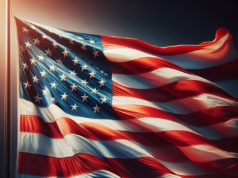Contents
- 1 Understanding the Connection Between Domestic Violence and Firearm Access
- 2 The Alarming Statistics: Domestic Violence Incidents Involving Guns
- 3 Legal Framework: Current Gun Laws and Domestic Violence Protections
- 4 Case Studies: Real-Life Consequences of Domestic Violence and Gun Ownership
- 5 Advocacy Efforts: Organizations Pushing for a Domestic Violence Gun Ban
- 6 The Path Forward: Recommendations for Policy Changes and Community Action

The intersection of domestic violence and firearm access presents a critical public safety issue that demands urgent attention. As communities grapple with the devastating consequences of domestic abuse, the presence of firearms in these situations exacerbates the danger, often leading to tragic outcomes. This article explores the alarming connection between domestic violence and gun ownership, highlighting the need for comprehensive policy changes to protect vulnerable individuals and promote safer environments.
Understanding the Connection Between Domestic Violence and Firearm Access
Research consistently shows that the presence of a firearm in a domestic violence situation significantly increases the risk of homicide. According to the National Coalition Against Domestic Violence (NCADV), women are five times more likely to be killed by an intimate partner if that partner has access to a gun. The dynamics of power and control inherent in abusive relationships are intensified when firearms are involved, creating an environment where threats can quickly escalate to lethal violence. Understanding this connection is crucial for developing effective interventions and policies aimed at reducing domestic violence fatalities.
The Alarming Statistics: Domestic Violence Incidents Involving Guns
Statistics reveal a harrowing reality: in the United States, nearly one million women are assaulted by an intimate partner each year, and a significant percentage of these incidents involve firearms. The Violence Policy Center reports that in 2020, 1,020 women were murdered by men, with more than half of those killings occurring in the context of intimate partner violence. Furthermore, a study by the American Journal of Public Health found that the presence of a gun in domestic violence situations increases the likelihood of homicide by 7 times. These figures underscore the urgent need for policies that restrict firearm access for individuals with a history of domestic violence.
Legal Framework: Current Gun Laws and Domestic Violence Protections
The current legal framework surrounding gun ownership and domestic violence is complex and often inadequate. While federal law prohibits individuals convicted of domestic violence misdemeanors from purchasing firearms, enforcement is inconsistent, and many states lack comprehensive measures to prevent gun access for those with a history of abuse. Additionally, loopholes in the law, such as those allowing individuals to purchase firearms at gun shows without background checks, further complicate efforts to protect victims. Advocates argue that stronger, more uniform regulations are essential to close these gaps and ensure that individuals with a history of domestic violence cannot obtain firearms.
Case Studies: Real-Life Consequences of Domestic Violence and Gun Ownership
Numerous case studies illustrate the tragic consequences of domestic violence intertwined with gun ownership. One notable case involved a woman named Jane Doe, who was shot and killed by her estranged partner despite having obtained a restraining order against him. He had a history of domestic violence but was able to purchase a firearm legally due to loopholes in existing laws. This case, among many others, highlights the critical failures in the system that allow abusers to access weapons, ultimately leading to devastating outcomes for victims and their families. These stories serve as powerful reminders of the urgent need for reform.
Advocacy Efforts: Organizations Pushing for a Domestic Violence Gun Ban
A growing number of organizations are advocating for a domestic violence gun ban, recognizing the urgent need for policy changes to protect victims. Groups such as Everytown for Gun Safety, the Brady Campaign, and the National Domestic Violence Hotline are at the forefront of this movement, working to raise awareness about the dangers of gun access in domestic violence situations. These organizations are pushing for legislative changes at both the state and federal levels, aiming to implement stricter background checks, close loopholes, and create more robust protections for victims. Their efforts are crucial in mobilizing public support and influencing policymakers to take action.
The Path Forward: Recommendations for Policy Changes and Community Action
To address the pressing issue of domestic violence and firearm access, a multi-faceted approach is necessary. Policymakers should prioritize the implementation of universal background checks, mandatory reporting of domestic violence incidents to law enforcement, and the establishment of a national database to track firearm purchases by individuals with a history of abuse. Additionally, community organizations must work collaboratively to provide resources and support for victims, including legal assistance and safe housing options. Public awareness campaigns can also play a vital role in educating communities about the risks associated with firearms in domestic violence situations, fostering a culture of prevention and support.
The urgent need for a domestic violence gun ban is underscored by the alarming statistics and real-life consequences that continue to unfold across the nation. As advocates push for policy changes and communities rally to support victims, it is imperative that lawmakers take decisive action to protect those at risk. By addressing the connection between domestic violence and firearm access, we can work towards a safer future for all individuals, free from the threat of violence in their own homes.

























